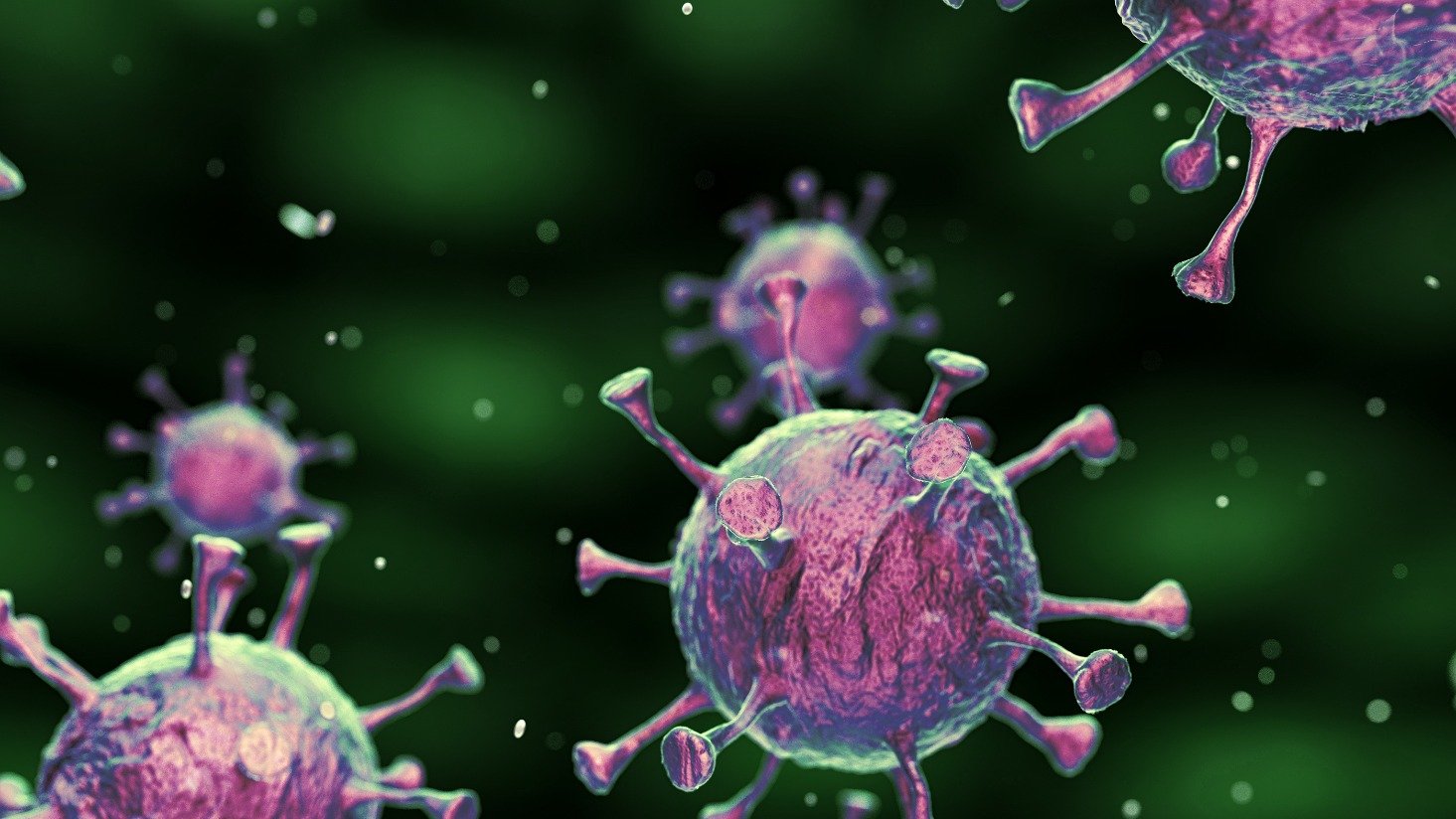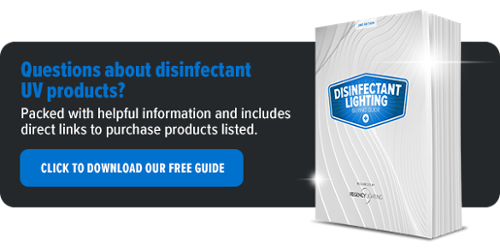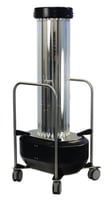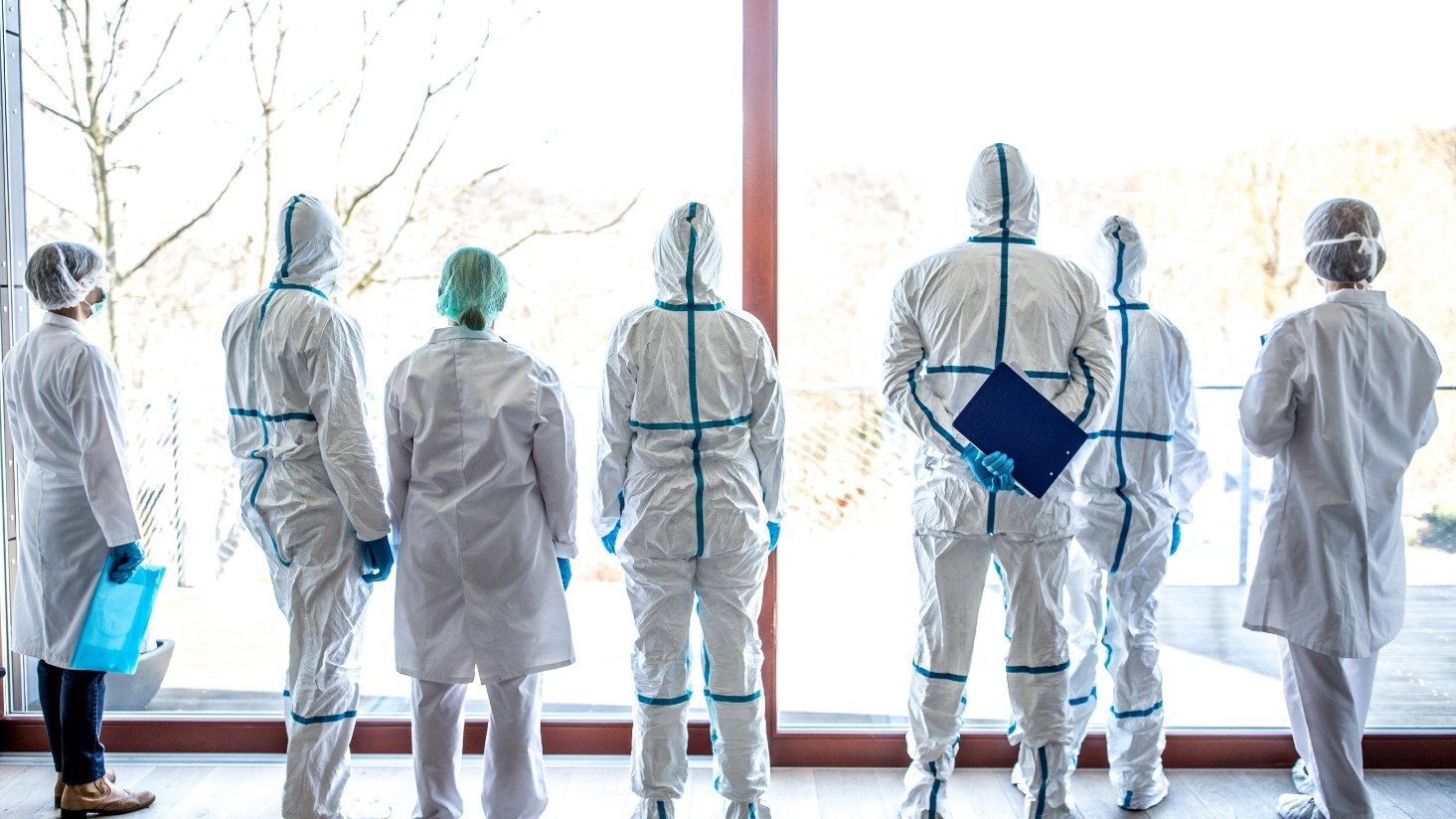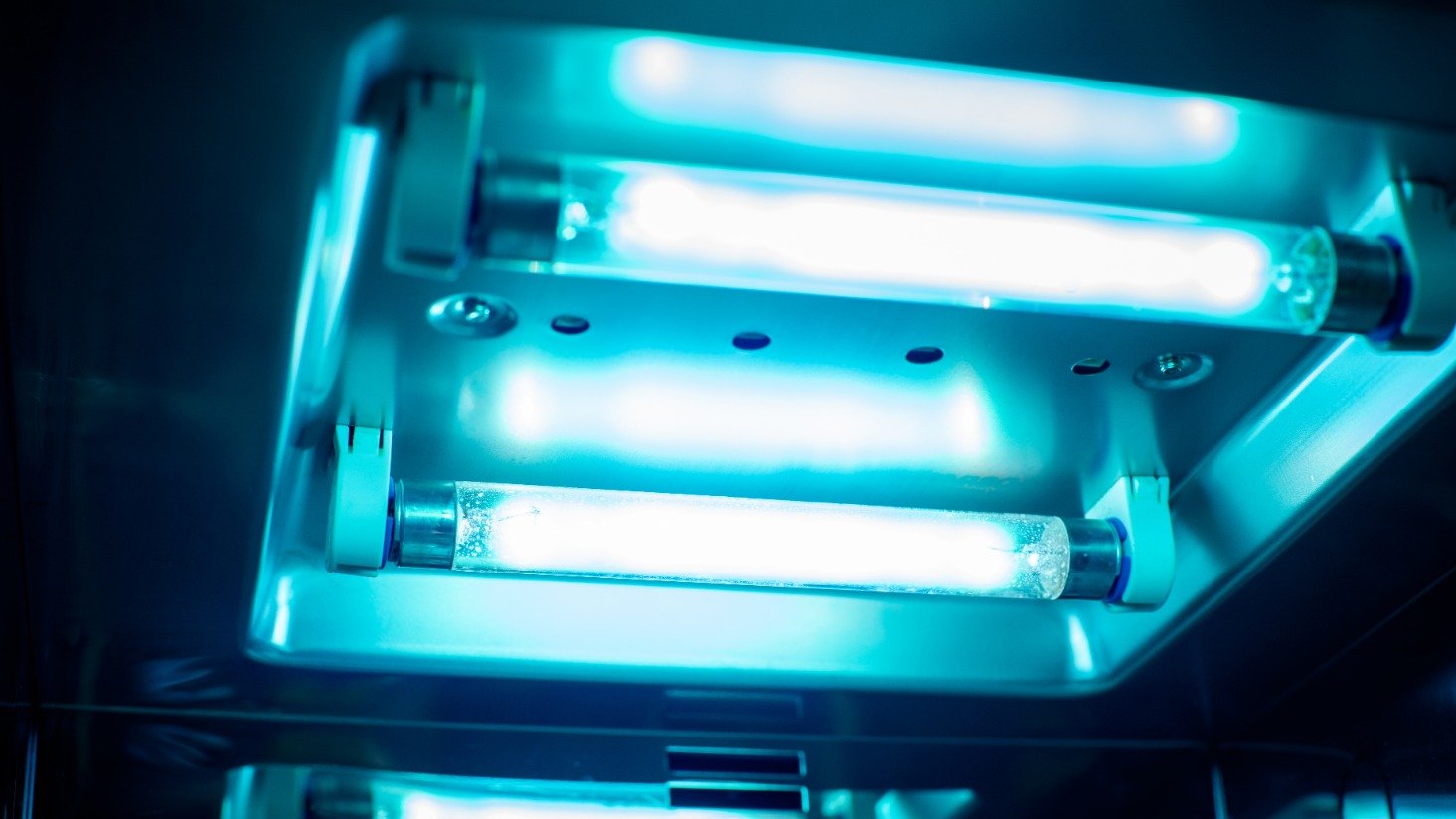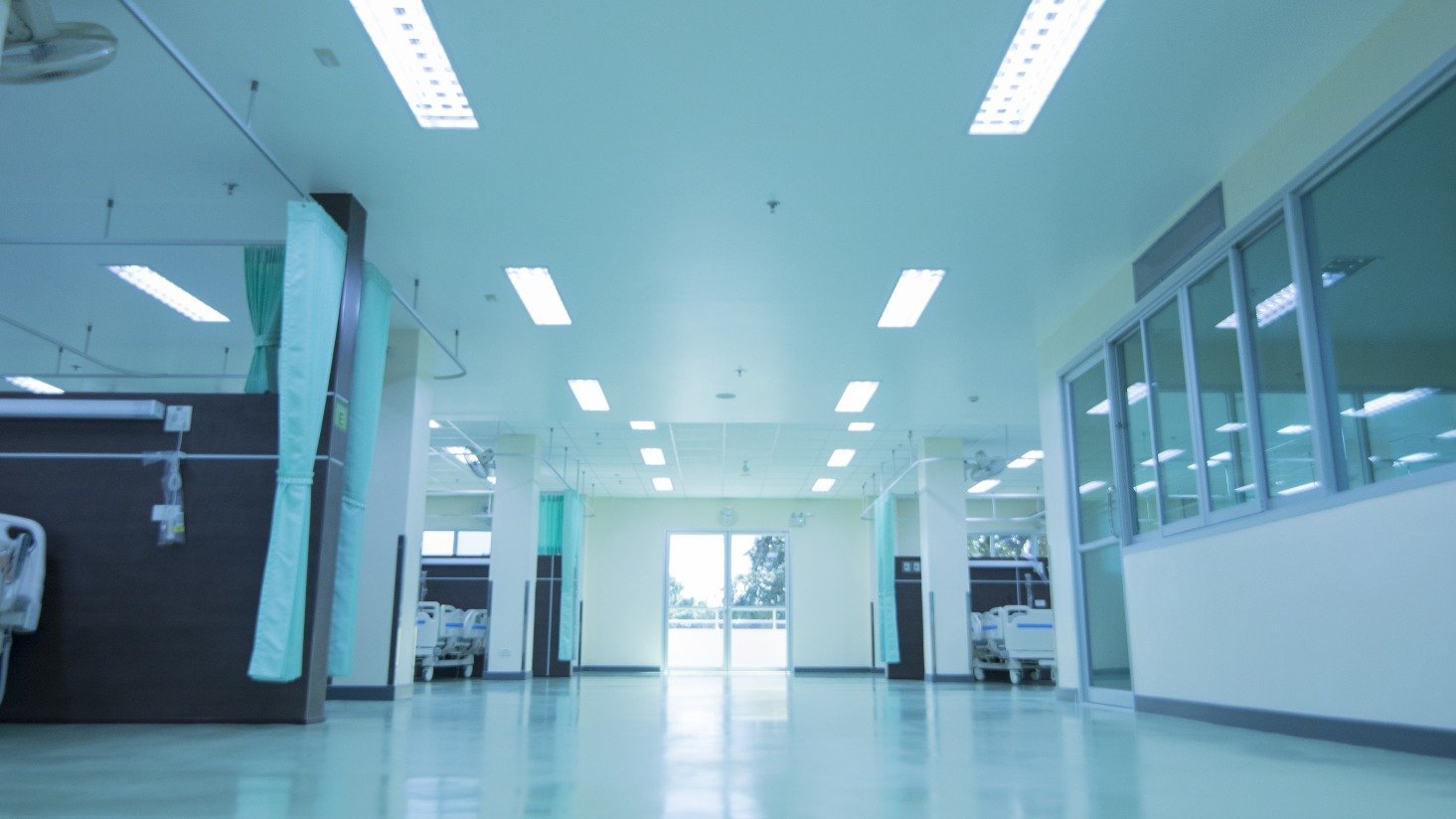Using UV light to kill viruses like COVID-19

Scientists have known about the disinfection capabilities of ultraviolet (UV) light for decades. Now, it's considered an important tool in the fight against COVID-19.
A scientist at Columbia University found UV-C is effective against SARS-CoV-2, the virus that causes COVID-19, in laboratory settings.
But the results still leave a lot of questions. What is UV-C? How does it work? Is it safe? We're explaining the answers to those questions and more.
UV-C (also called germicidal UV) products tout pathogen kill rates higher than 99.9%. Because of their effectiveness, they're incredibly useful for hospitals, medical labs, senior care centers, fire and police stations, airports, transit stations, schools, government buildings, office buildings, and hotels.
What is UV-C light?
UV-C (also called germicidal UV) is part of the ultraviolet spectrum that can inactivate pathogens like bacteria and viruses. UV-C utilizes specific wavelengths of the ultraviolet spectrum, typically between 200 to 280 nanometers.
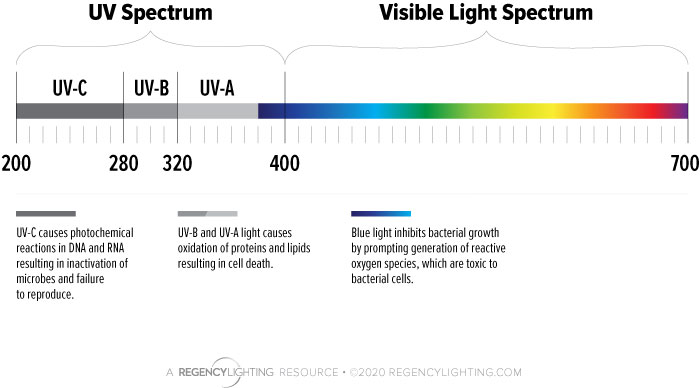
UV-A and UV-B light can also kill some bacteria and germs, but are mostly ineffective against viruses like SARS-CoV-2. The Illuminating Engineering Society (IES) recently released a report on germicidal UV that says UV-C is the most effective part of the spectrum.
Read more: Does all UV light kill germs?
Although it is commonly called "UV light," ultraviolet wavelengths fall just outside of the visible light spectrum. Scientists usually refer to UV as radiant energy, but "UV light" has become more commonly accepted. You will not see visible light produced from UV products.
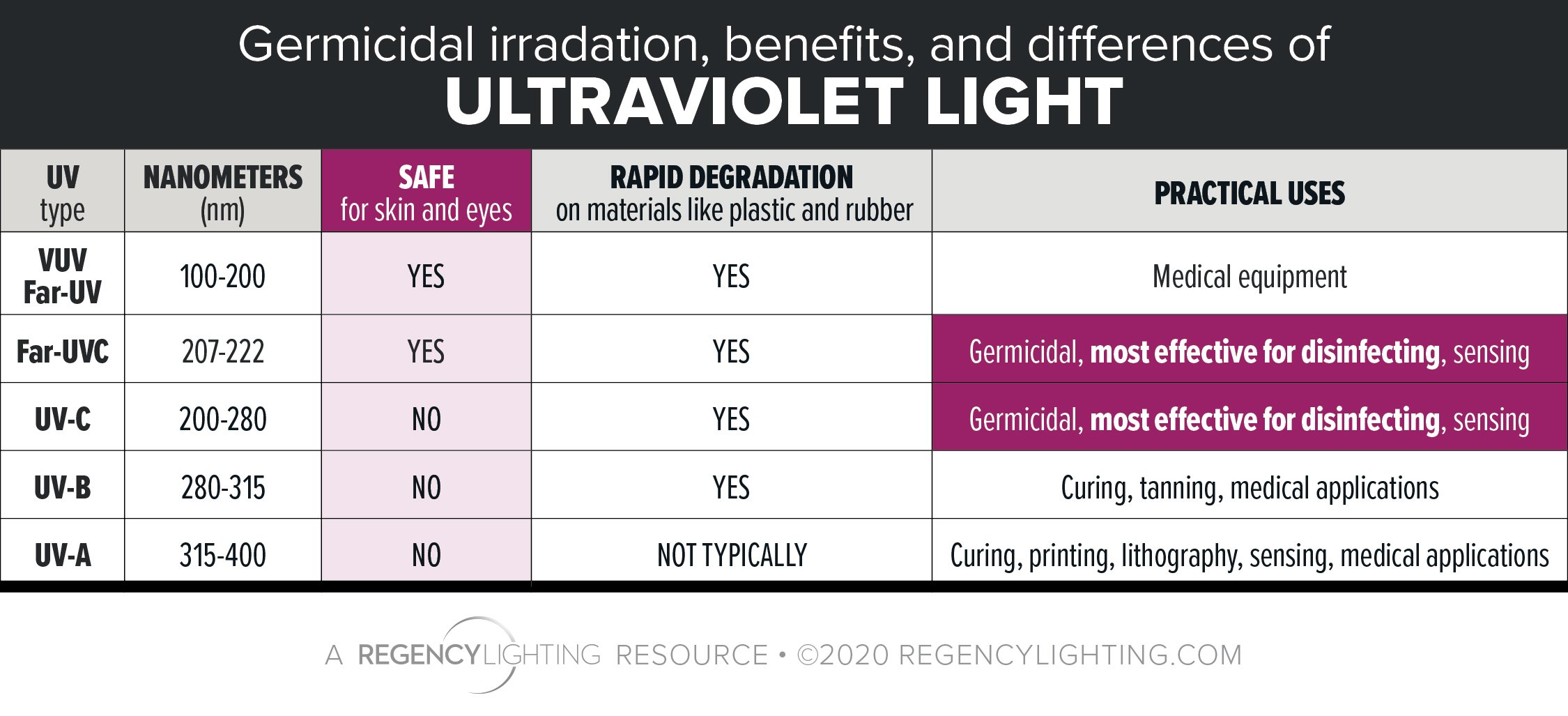
How does germicidal UV kill viruses?
Germicidal UV products can actually change the DNA and RNA of bacteria and viruses, destroying their ability to reproduce.
Most UV-C products can inactivate up to 99.9% of pathogens including viruses, bacteria, mold spores, and fungus. Viruses are not technically living organisms, so germicidal UV technically "inactivates" viruses.
Since COVID-19 can live on certain surfaces for up to three days and can travel through the air, germicidal UV is a great tool to disinfect air and surfaces.
Although the science behind germicidal UV has been around for a long time, it hasn't been widely used in the U.S. until recently. The CDC and FEMA started to endorse the use in hospitals in the early 2000s. Since then, several medical reviews have noted the effectiveness and usage has jumped in the last 13 years.
Now, the technology is expanding to include new products that can work for a wide range of industries, not just hospitals.
Can UV light kill COVID-19?
Yes, according to a scientist from Columbia University. Preliminary test results from Dr. David Brenner found UV-C can inactivate COVID-19.
Dr. David Brenner performed tests on secure samples of SARS-CoV-2, the virus responsible for COVID-19. He exposed the samples to UV-C and measured the response after the exposure.
Dr. Brenner announced his results in a news conference with New York City's Metropolitan Transportation Authority (MTA). The MTA is starting a pilot program with PURO™ Lighting products, powered by Violet Defense™ Technology, to disinfect its buses, trains, and offices. Dr. Brenner said he used the same type of UV that will be used on the subway in his research.
Dr. Brenner says he will continue with more tests and have his research peer reviewed.
Because the structure of COVID-19 is different from past viruses, this testing is extremely important.
It's also important to note germicidal UV does not replace other cleaning measures like dusting off surfaces. In fact, germicidal UV products cannot penetrate particles like dust, so dirty surfaces will cause effectiveness to drop.
Is germicidal UV light safe?
Similar to the UV-A and UV-B rays from the sun, exposure to UV-C can damage the skin and eyes. It's important to follow strict safety guidelines when the products are operating.
As a basic rule, germicidal UV lamps should not run when anyone is nearby. The IES says there are no reports of long-term damage from an accidental overexposure, but there can be painful temporary consequences.
Only trained workers should handle germicidal UV units and make sure the product is turned off before performing maintenance. Also, you should buy the right light bulb for the right fixture and follow product use guidelines from manufacturers.
One more tip for staying safe around UVC light is using the right personal protective equipment (PPE). You can also find UVC-sensitive personal exposure stickers to help indicate when someone working around UVC light may have received the maximum daily exposure limit.
What is far-UVC light?
In the last decade, several scientists have focused their attention on a narrow range of UV-C wavelengths, called far-UVC. Far-UVC products typically use wavelengths between 207 to 222 nm.
Far-UVC is believed to be just as effective at killing germs as higher ranges of UV-C light, but less harmful to our skin and eyes.
One study in particular focuses on the use of far-UVC light. The study concluded that 222 nm UV can inactivate pathogens but not penetrate the skin. The IES warns that safety may depend on the product's glass envelope, or outer layer of the lamp.
Other studies suggest that wavelengths as low as 185 nm can still kill germs.
Scientists are still performing tests on far-UVC, and manufacturers are starting to use the technology in some products.
Advantages of germicidal UV
Germicidal UV lamps are extremely effective and have several major advantages.
- Pathogen kill rate – Tests show that germicidal UV products kill up to 99.9% of bacteria and viruses when used correctly. On top of that, bacteria and pathogens cannot become resistant to UV like they can certain antibiotics and antibacterial products.
- Limited chemical exposure – UV-C works in place of potentially harmful chemicals. It's safe to enter a room after germicidal UV products disinfect the area, but it might be hard to breathe in a room that has just been sprayed down with chemicals.
- Lighting configurations – There are multiple lighting configurations for germicidal UV light, including different types of fixture installation, mobile units, and industrial HVAC attachments. Mobile units are a great option for hospitals, airports, fire and police stations, and the hospitality industry because they're easy to move from room to room. Plus, mobile units are a budget-friendly option compared to installing fixtures in every room.
Can germicidal UV deteriorate materials or surfaces?
UV rays from the sun are known to damage materials – that’s why a toddler’s plastic toys left outside over the summer causes the colors to fade and the plastic to be more brittle.
Similarly, UV-C and broad spectrum products can damage materials over time. The critical difference to look for is whether the UV radiation is constantly on or gives short bursts or pulses of disinfecting UV rays.
In most cases, constant UV rays will cause mainly cosmetic damage on objects or surfaces. For example, a white PVC pipe can change to a tan or brown color, but still maintain its structural integrity.
The germicidal UV fixtures made by PURO™ Lighting, powered by Violet Defense™ technology, are a good example of a disinfecting fixture that gives periodic bursts of broad spectrum UV to disinfect surfaces with minimal impact on materials.
Germicidal UV products
Germicidal lamps can be low-pressure mercury vapor bulbs, xenon lamps, and some LEDs.
We have several types of replacement bulbs available on our site.
If you're looking to install UV products, we are continuing to add to the fixtures we have available.
PURO™ Lighting products use a pulsed xenon light sources to create broad-spectrum UV for disinfection, which is a combination of UV-A, UV-B, and UV-C wavelengths.
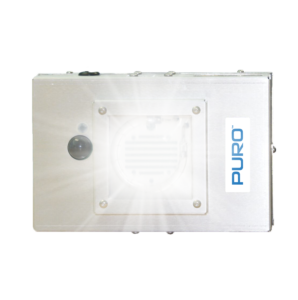 |
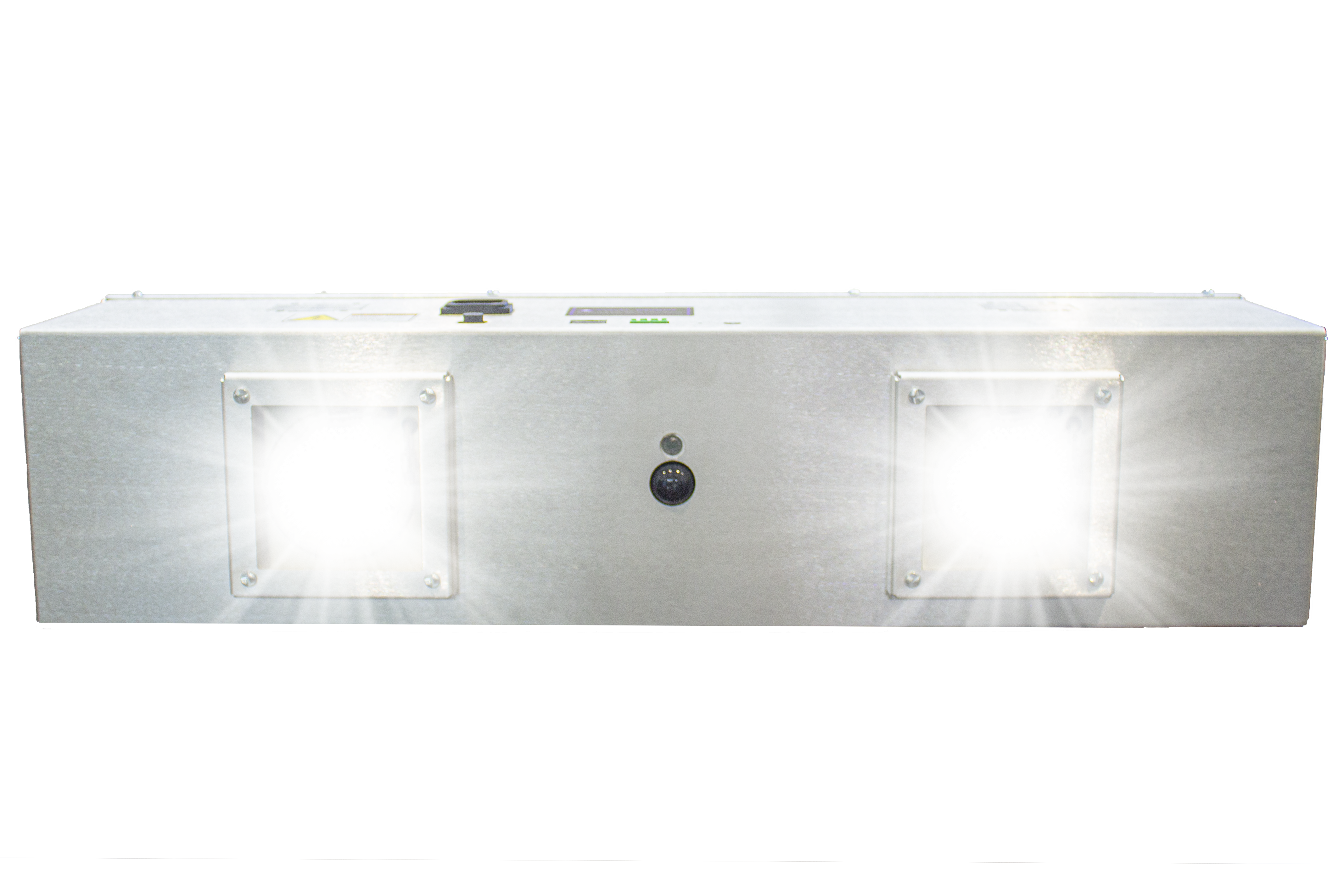 |
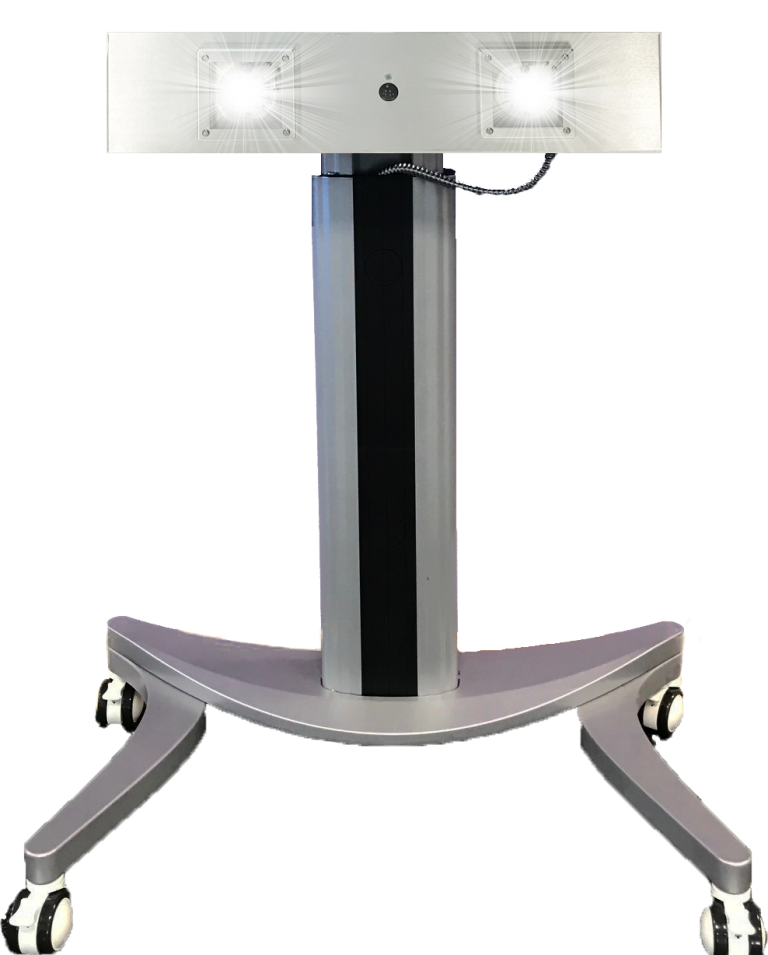 |
| PURO™ Helo F1 View product >> |
PURO™ Helo F2 View product >> |
PURO™ Sentry mobile units View products >> |
American Ultraviolet® has a long, proven track record. The company started making UV products in the 1960s. All of their products use UV-C (254nm) to operate.
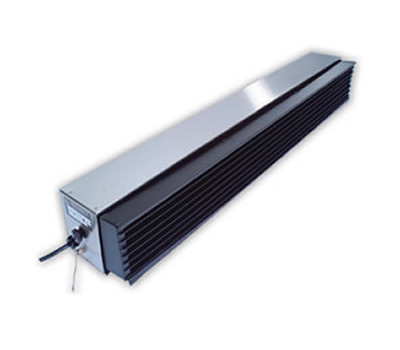 |
|
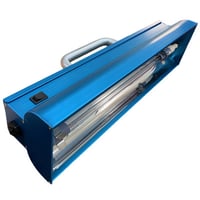 |
| American Ultraviolet® Upper-Air Units View products >> |
American Ultraviolet® Mobile Units View products >> |
American Ultraviolet® Handheld Unit View product >> |
Light Progress is another proven manufacturer with innovative UVC (254nm) products to consider.
 |
|
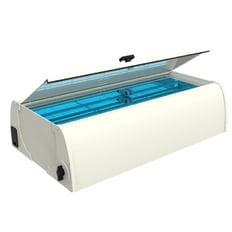
|
| Light Progress Upper-Air Units View products >> |
Light Progress UVC Fan Units View products >> |
Light Progress UVC Box View product >> |
Germicidal UV applications for industrial HVAC units have also been available for years, and are already used in some hospitals. American Ultraviolet® and Light Progress both offer a series of products to disinfect ducts and coils. Contact us if you'd like more information.
Verifying germicidal UVC effectiveness
Ensuring that the air or surfaces you plan on disinfecting get the right amount, or dose, of UVC energy to kill pathogens is critical. While you can find advanced (and expensive) measurement devices like radiometers, there is a device called a dosimeter that contains color-changing UVC-sensitive ink. 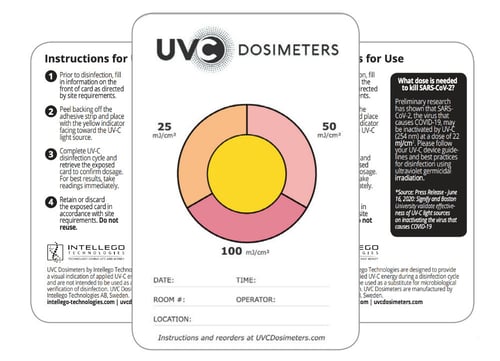 Dosimeters are single-use cards or stickers that you can use at commissioning to ensure that your UVC fixture run time is appropriate. We've also written a more detailed article on how to tell if UV light is killing germs and viruses.
Dosimeters are single-use cards or stickers that you can use at commissioning to ensure that your UVC fixture run time is appropriate. We've also written a more detailed article on how to tell if UV light is killing germs and viruses.
Dosimeters come in a variety of formats, depending on the intended use. It is important to note that these dosimeters are intended for use with 254nm light sources and do not provide accurate measurement for far-UVC, LED UVC, or pulsed xenon light sources.
Are you looking for ballasts compatible with germicidal UV bulbs? Click here to shop.
If you have any questions about germicidal UV products, where to use them, or how they could work for your commercial building, please do not hesitate to contact us.
